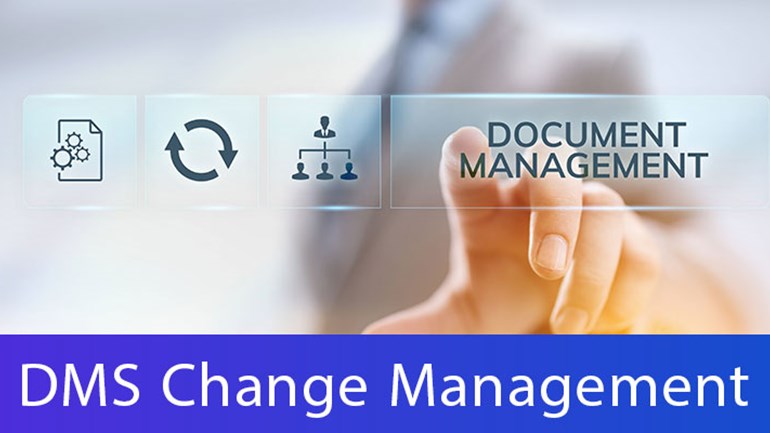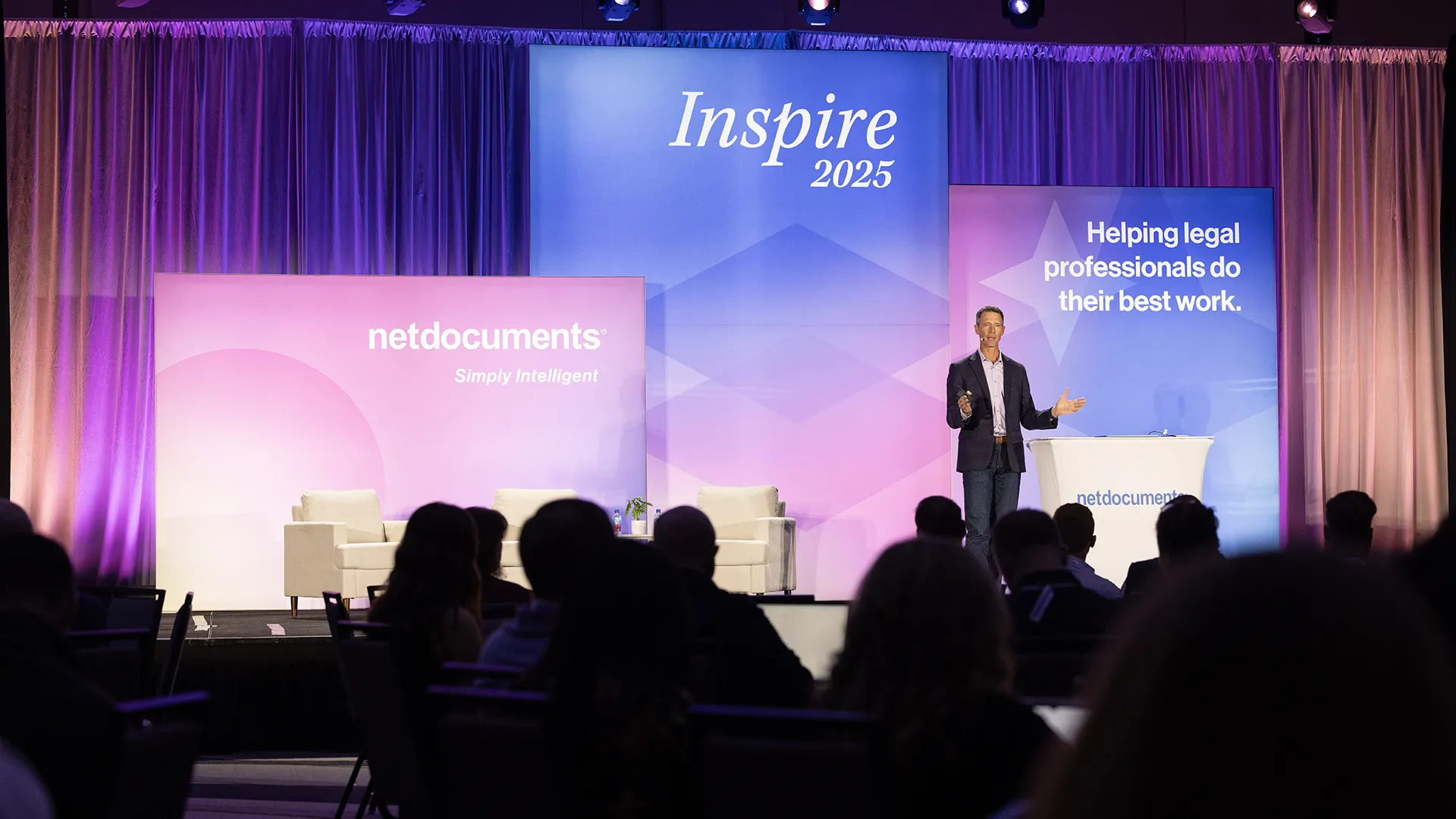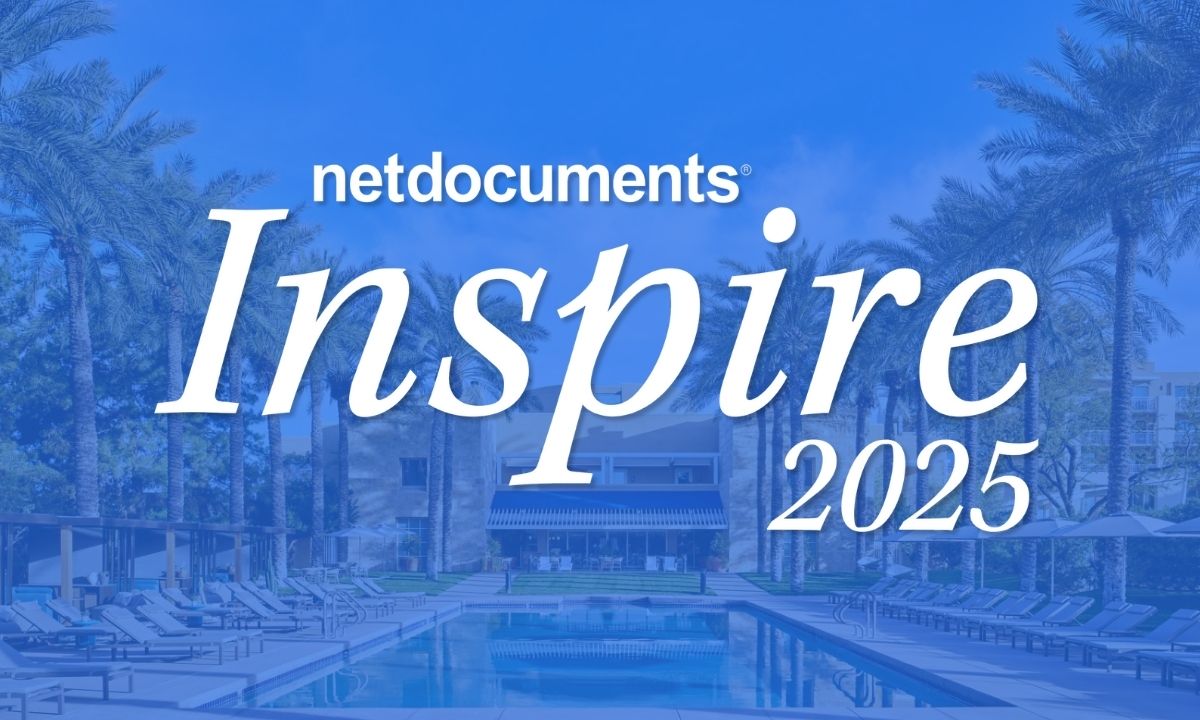
Blog
DMS Blog Series, Part 3 of 5: DMS Change Management

Change will always be hard—that’s inevitable. But when it comes to overhauling a central system in your firm, like a document management system (DMS), there can be serious consequences if that change is not handled correctly. To successfully mitigate the challenges of implementing a new DMS, it helps to get a bird’s eye view of the process.
In parts 1 and part 2 of this series, you’ve learned what a DMS is and benefits of having one – particularly in the Cloud. Now, you’ll learn common potential roadblocks that occur as you implement a new DMS, as well as solutions to help overcome them.
Start Off on the Right Foot
The tone of the entire project is usually set from the beginning – start messy, and the whole project can quickly become a mess. When you begin the project in a thoughtful manner, you can start your change management journey on the right foot and set yourself up for greater success.
Identify Stakeholders
Before, and as you begin looking at various document management solutions, identify key stakeholders in the company. Typically you’ll want to include anyone who is involved from the technology aspect, end-users, and other teams that may be affected by the system change. Over communication and team input will be crucial in thoroughly evaluating various vendors.
Assess Your Current System
Next, look critically at your existing system with your stakeholders. How do you currently organize, share, or collaborate on documents? What are the main problems that need to be fixed or optimized? (We’ll cover more questions you should ask in part 4 of this series!) Understanding your core needs, and ideal “future state” of where you want to be will help you identify key features that you are looking for in a DMS.
You will also want to assess if and how other systems may be impacted by switching or implementing a new DMS. For example, if you have existing custom apps or integrations with third-party tools, you’ll want to understand if there are any implications to a new system. Some DMS providers may have an open API or be willing to create new integrations for their customers if needed.
Set Deadlines and Create Outlines
Of course, while you want to do appropriate due diligence, choosing a DMS should not be an agonizing, endless process. Create an outline with technical and non-technical requirements for your new DMS, as well as timeframes for choosing and implementing a new system. This will help you remain on track and keep the project a priority.
Key Steps:
- Identify key stakeholders.
- Assess current document management, data flows, and business processes.
- Identify integrations, custom apps, and other third-party tools that will be affected by the change.
- Identify specific problems to be solved or optimized.
- Develop an outline for the selection process—with deadlines.
Get Buy-In
A key component of a new DMS is that you want to maximize adoption rates among users, which requires getting buy-in from the start. In addition to including end-users among your group of stakeholders from the beginning, here are a few other ways to maximize buy-in and ultimately, adoption, with the new DMS:
Communicate
A new DMS should not come as a surprise on the day implementation starts. For many users, especially those who have their own well-established processes with the existing DMS, changing such a central system can be jarring. However, you can easily address this by communicating early and transparently. Having weekly meetings, hosting online trainings, and emailing status updates can help ensure the team and organization are up-to-date.
Accentuate the Positive
While there may be dissenting opinions, remember the end goal: you’re creating a less stressful, more flexible work environment that enables you to work safely and securely, protecting your most sensitive documents. When it comes to discussing the forthcoming change, emphasize the benefits, especially for individual users. While you don’t want to ignore challenges or questions, make sure to remind the team of the end benefits.
A Success Story
Claro & Cia., a law firm based in Santiago, Chile, recently moved to NetDocuments after using their former DMS for over a decade. As part of their selection process, the team hosted workshops with each potential provider, allowing end-users to evaluate the various strengths and weaknesses of the different systems. While this helped the firm choose the solution that best met their team’s needs, it also supported buy-in and user adoption as team members felt that their opinion and experience mattered. (See why Claro chose NetDocuments over its competitors in the case study.)
Key Steps
- Be transparent and communicate with your team.
- Don’t ignore the negative, but always accentuate the positive.
- Consider hosting end-user workshops to solicit feedback and encourage buy-in.
Maximize Adoption and Usage of the DMS
There are many benefits to a Cloud-based DMS, but you’ll only reap these benefits if your team is fully on-board with the new system. Here’s how to make sure you’re getting the most out of your DMS:
Train Your Team
It might seem like overkill, particularly if you’ve been the one going through demos and features and trials, but training users team on the platform is vital.
Start with the big picture, and gradually work through the basics of getting started, and then dive into the details that are relevant to specific user groups. While it will take time and likely several sessions to cover everything, it’ll all be worth it when your team is able to work effortlessly with the system (and each other).
Find Your Superusers
Not everyone will become an expert on the platform, and that’s okay. But you’ll likely have a few people on your team who do, and their experience and knowledge should not go to waste. Instead, make them a resource other team members can rely on. They’ll also be a great source of ongoing feedback on the platform.
Keep Optimizing
No system or implementation is perfect, but you can always make it better. Monitor how well the platform is being adopted by your team, so you can identify and address any problems. If needed, host follow-up training to help your team get up to speed as quickly as possible. As you better understand how your team uses the platform, you’ll be able to further customize it to meet their needs.
Key Steps
- Host training to help get team members up to speed quickly.
- Identify internal experts who can be an additional resource for help when needed.
- Keep optimizing your system to meet team needs.
What’s Next
Coming up in part 4, we’ll cover 11 questions you can ask to make sure that you have the right DMS platform and the right provider to have your back.
Ready to learn more about getting started with NetDocuments? Request a demo today or call (866) NET-DOCS
Explore these other blogs
-

- Blog
2026 Legal Tech Trends
Michelle Spencer Lead Technology Strategist The legal industry hit a defining…
-

- Blog
Inspire 2025 Recap: Powering the Intelligent Legal Platform
Josh Baxter CEO, NetDocuments Every October and November, we gather for…
-

- Blog
Inspire 2025 Phoenix Day 3 Recap: NetDocuments AI Search Makes Its Debut
Michael Owen Hill Director of Product Marketing Another successful NetDocuments Inspire…
-

- Blog
Day 2 Recap from Inspire Phoenix: Innovation Where Great Legal Work Happens
Michael Owen Hill Director of Product Marketing Day two of Inspire…
netdocuments


